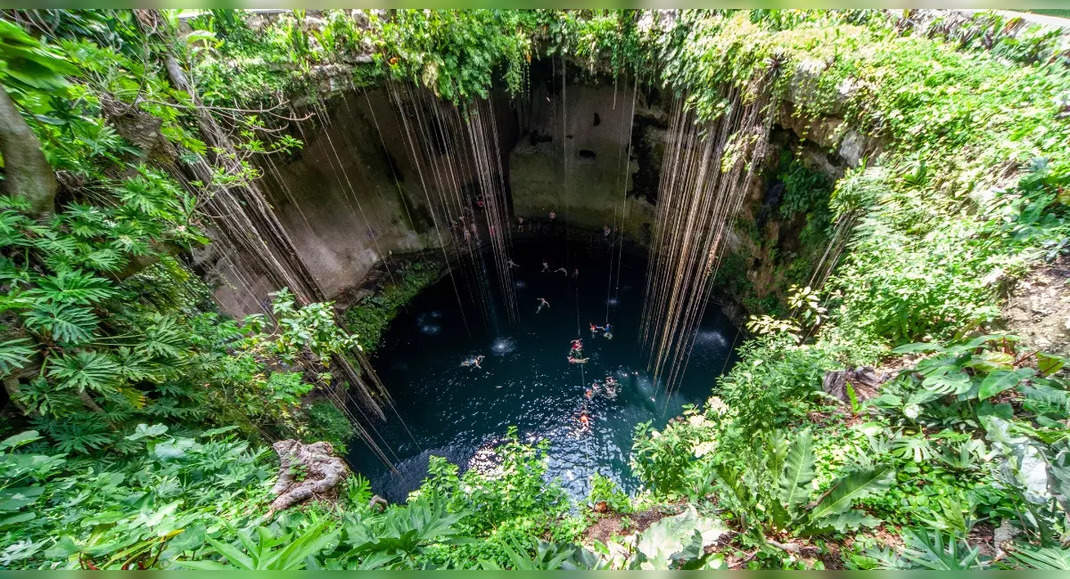World
Mexico: Enchanting world of cenotes in Yucatan Peninsula; and what’s bothering them lately

The Yucatan Peninsula in Mexico is renowned for its stunning natural wonders, and among its most captivating attractions are the cenotes. These unique geological formations, found throughout the region, have become major tourist attractions, drawing visitors from around the world to explore their beauty and mystique.
If reports are to go by, in Mexico’s Riviera Maya, a delicate underground ecosystem of stunning cenotes faces threats from the controversial Maya Train project. The Yucatan Peninsula boasts approximately 2,400 of these caverns, which are major attractions for tourists. Campaigners warn of damage to the unique geological system caused by the train’s construction. Despite court-ordered suspensions and environmental concerns, work on the project continues, with activists accusing President Lopez Obrador of rushing its completion. The project’s environmental impact and destruction of the jungle have led to criticism, with activists branding it ecocide and demanding proper studies.

What are cenotes?Cenotes are natural sinkholes or underground caves filled with crystal-clear groundwater. They were formed over thousands of years as limestone bedrock collapsed, revealing hidden subterranean rivers and caverns. The Yucatan Peninsula is home to thousands of cenotes, each with its own unique characteristics and charm.
There are several types of cenotes, including:
– Open cenotes: These are exposed to the surface and resemble small ponds or lakes. They often have lush vegetation surrounding them and are popular for swimming and snorkeling.
– Semi-open cenotes: Partially covered by a cavern or rock overhang, these cenotes offer a mix of sunlight and shade. They are ideal for both swimming and cave exploration.
– Cave cenotes: Completely enclosed within underground caves, these cenotes offer a more adventurous experience for divers and explorers. They often feature stunning rock formations and crystal-clear water.
Also read: Offbeat places to visit near Shimla to escape the touristy crowd

Activities at cenotes:
– Swimming and snorkeling: Many cenotes are perfect for swimming and snorkeling, with clear, refreshing water that allows you to see fish, turtles, and underwater rock formations.
– Diving: Cave cenotes provide opportunities for scuba diving, allowing experienced divers to explore intricate underwater cave systems and admire unique geological formations.
– Cenote tours: Guided tours are available for visitors who want to learn about the geological and cultural significance of cenotes. These tours often include visits to multiple cenotes, as well as nearby Mayan ruins and traditional villages.
Also read: What’s it like to trek to Everest Base Camp in Nepal?

Cenotes hold immense cultural and spiritual significance for the Mayan people, who considered them sacred portals to the underworld. They were used for ceremonial rituals, as well as a vital source of freshwater in the region. Today, cenotes continue to be revered as important natural landmarks and are protected by conservation efforts. Due to their ecological importance and cultural significance, cenotes are protected by environmental regulations and conservation efforts. Visitors are encouraged to respect the natural environment and follow guidelines to ensure the preservation of these unique ecosystems for future generations.










